And here I thought scimitars were swords
Type: Singleplayer, Multiplayer
Genre: Strategy
Developer: Byzantine Games
Publisher: Slitherine Ltd.
Release date: 23 Sep, 2021


The DLCs for Field of Glory II: Medieval are really coming out at a rapid pace. It was in June that we got the first DLC, Reconquista, which covered the Iberian peninsual, Italy and the western parts of North Africa. Swords and Scimitars is covering a far greater geographical area than that, heck it’s even a far greater area than the base game covers. From Bulgaria & Egypt in the west, all the way to current day India in the east, this DLC introduces nations from a huge geographical area.
Despite covering such a large area, the number of new nations and campaigns are the same as in Reconquista. 20 new nations, split into several different lists representing different factions and times, 4 new campaigns, 8 new scenarios and 35 new units, including elephants and bomb throwers.
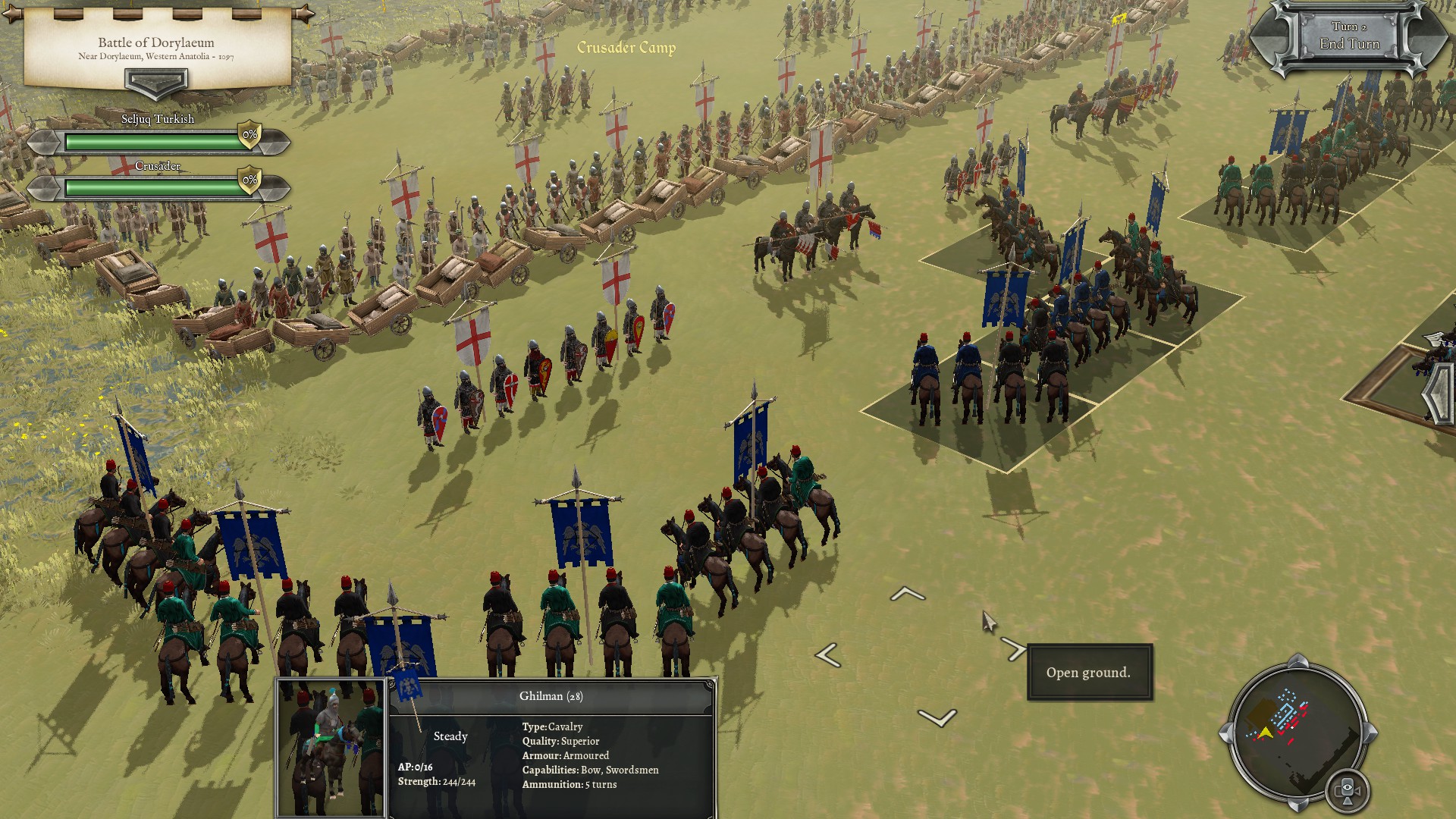
The History
Tension was rising in the Byzantine empire, the Seljuk Turks, a nomadic people from the east, have claimed a large swath of land from them and blocked the road to the Holy Land, preventing pilgrims from freely traveling there. Despite some recent unpleasantries with the pope, when the patriarch of Constantinople and the pope had decided to excommunicate each other Emperor Alexius Comnenus reached out to the Holy See and ask for help. The pope then sent out a call to arms, asking people to come and clear the way to the holy land and make the roads safe to travel once more. This came at an appropriate time because the fighting class of Europe was an unruly lot, and with no external foes to fight they turned on each other. A knight’s word meant very little at the time after all, and despite it being strictly prohibited to attack another knight between Lent and Easter or to steal cows from the church such behaviour was commonplace. Also there were real worries about the road to the Holy land being permanently blocked, and now they also had a chance to take some land in the area. The call to arms ultimately worked better than anyone could really have expected, and the Byzantines were now saddled with taking care of far more rampaging knights and commoners who demanded food and lodging in their land than they were ready for, before they then could move on to the Holy Land and fight the actual enemy.
These crusades would ultimately result in the formation of several Crusader states and more crusades were called. For the next 200 years war would rage between the Christians and Muslims in the middle east (and also between Muslims and Muslims, Christians and Christians, and sometimes Christian and Muslim allies fighting against other Christians and/or Muslims. What faith someone belongs to tends to only really matter when it makes sense politically).
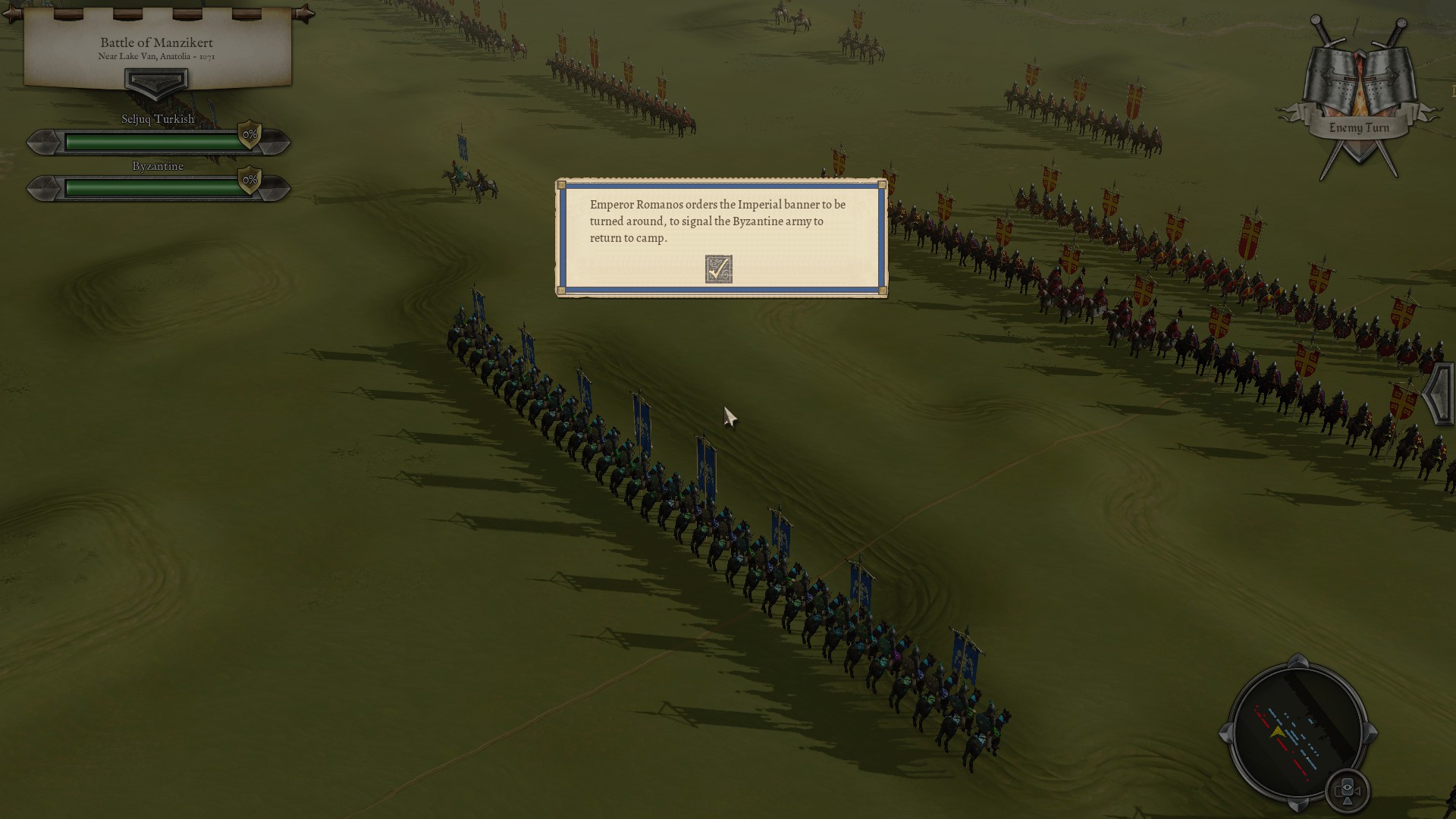
The Mongol invasion would throw a wrench in everyone’s plans as the Devil’s Horsemen rode into Europe and the near and Middle East. At first they seemed unstoppable, as they won victory after victory, with none of the kingdoms and caliphates seemingly being able to put up much of a defense. That is until 1260, when the Mamluks of Egypt were finally able to beat back a Mongol army (nevermind the fact that this army was little more than a rearguard, but it did show the world that the Mongols could be beaten, and that the the Mamluks were a force to be reckoned with).
Meanwhile in India things were not much calmer. India was at this time not a unified kingdom, but rather made up of several large nations, both Hindu and Muslim. During the 8th-11th century large portions of northern India was controlled by the Gurjara-Pratihara dynasty, although during the 12th century the Delhi Sultanate would end up taking over and over the course of the next 300 years conquer most of the Indian subcontinent. The Delhi Sultanate would also ultimately be one of the few nations that would successfully be able to hold back the Mongols as they tried to invade.
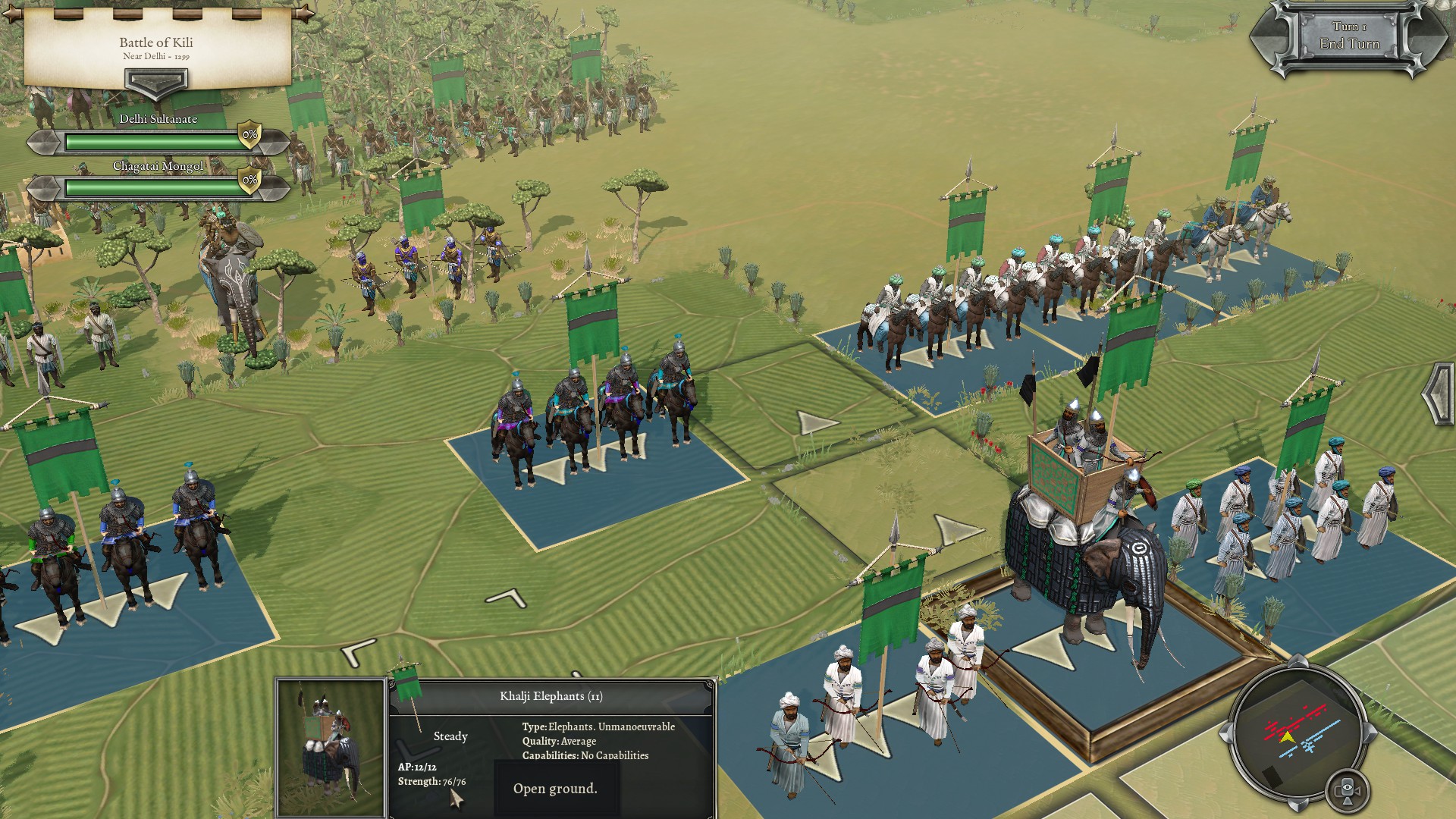
The New Nations & Units
20 new nations, split between 41 new army lists, as well as 35 new units that’s what this DLC has to offer. Like with the core game and the past DLC there’s a lot of overlap between the different lists when it comes to available units, as similar or the same units were used by multiple nations. Not all of the nations have particularly large rosters either. The Ghaznavids have access to a huge number of different units, while the later Khwarazmians roster only has four different units, all of which are cavalry, and only one not armed with bows & swords. The crusader states also has a roster that changes considerably over time, with the later ones getting access to the formidable knightly orders.
A large portion of the rosters are made up of units that were already in the game, or variants on existing units with new skins. There’s no real difference between a Hindu and a Muslim archer, both are just men with bows that function the same in game. The same is also true for many of the other units, a guy with a spear and a shield is going to be pretty much the same no matter if he’s from India, Syria or France, and a Teutonic Knight is going to function like a hospitaller on the battlefield. But that’s not to say that there’s nothing new. Elephants are big lumbering and frankly terrifying beasts that are hard to bring down, and this is reflected in game with the new Elephant units. They’re few in numbers but not easy to harm, and they tend to scare nearby horses. Then there are the naffatun, skirmishing bomb-throwers who scare men with their firebombs. But what mostly makes the new rosters interesting is the composition of them.
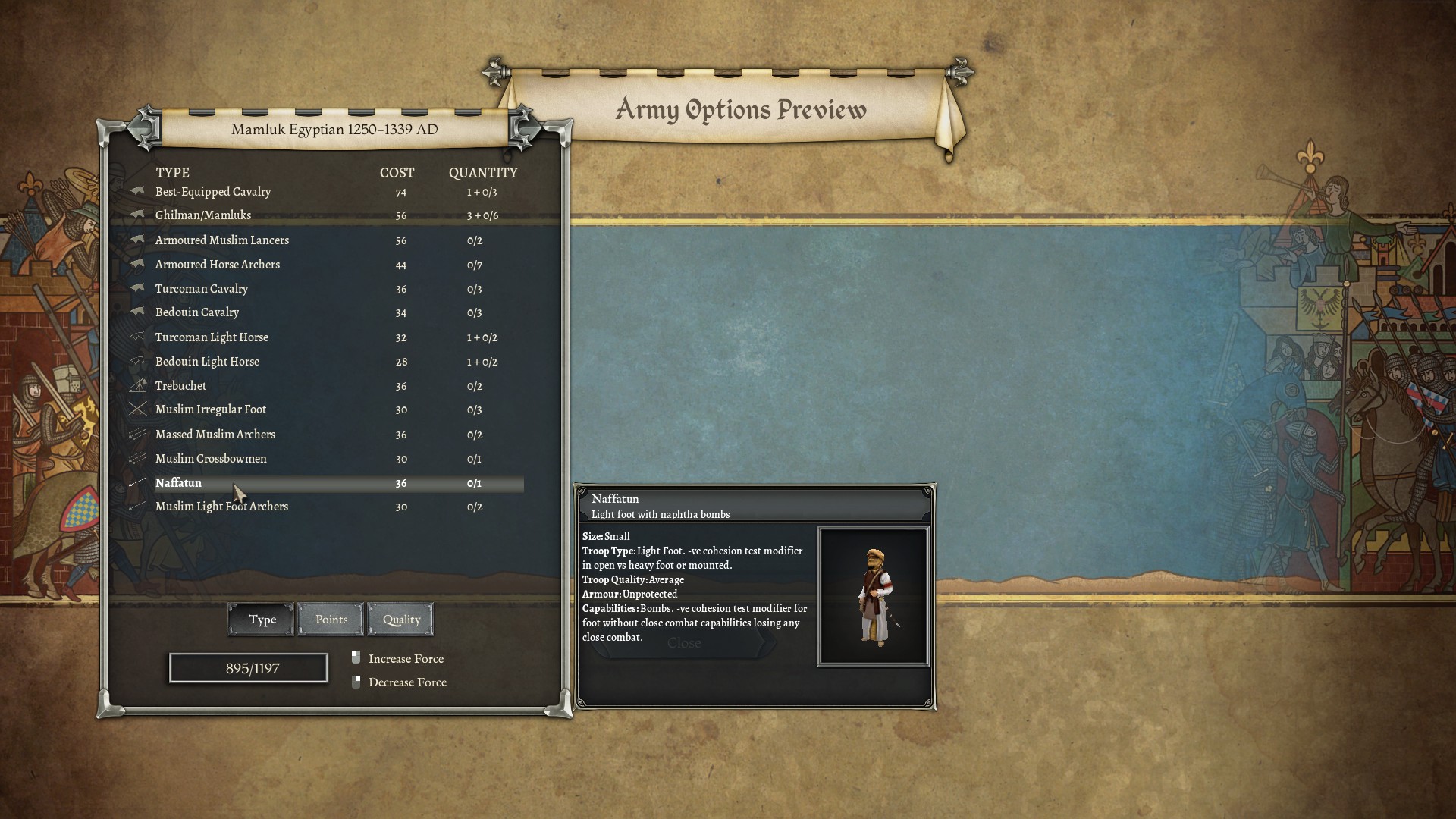
Campaigns & Scenarios
There are four new campaigns in Swords and Scimitars, all focusing on the events in or near the Holy Land. Two of them are about the Byzantine, the first following Alexius Comnenus and his attempts at holding the empire together under threats from both east and west, something that he historically did manage, the second one follows his grandson Manuel Komnenos, who lead the final real attempts at reclaiming Anatolia from the Seljuk Turks. There’s also one about the first crusade, and the early attempts at (re)claiming the Holy Land with a motley crew of nobles and peasants. The final one focuses on Al-Nasir Salah al-Din Yusuf ibn Ayyub, better known as Saladin, the Sultan of Egypt and Syria, who would go on to (re)claim Jerusalem. Sadly despite the fact that there are several Indian rosters in the DLC, none of the campaigns are based in India, which is a bit of a missed opportunity.
Beyond the four campaigns there are also the eight new scenarios, or epic battles, and once more we see a lack of Indians. There’s one scenario that sees the Delhi Sultanate face off against the Mongols, but the rest are about more western engagements. The selection is slightly weird, for an example there is a scenario where the Mamluks fight against the Mongols, but it’s not the famous “first victory” against them during the Battle of Ain Jalut, but rather a later battle. That said, the scenarios are still well made and has some interesting mechanics that you don’t get in random battles or the campaigns, like one scenario where part of one of the armies gets confusing orders and part of it starts the game by moving back towards their own home edge. The new scenarios are a highlight of this DLC.
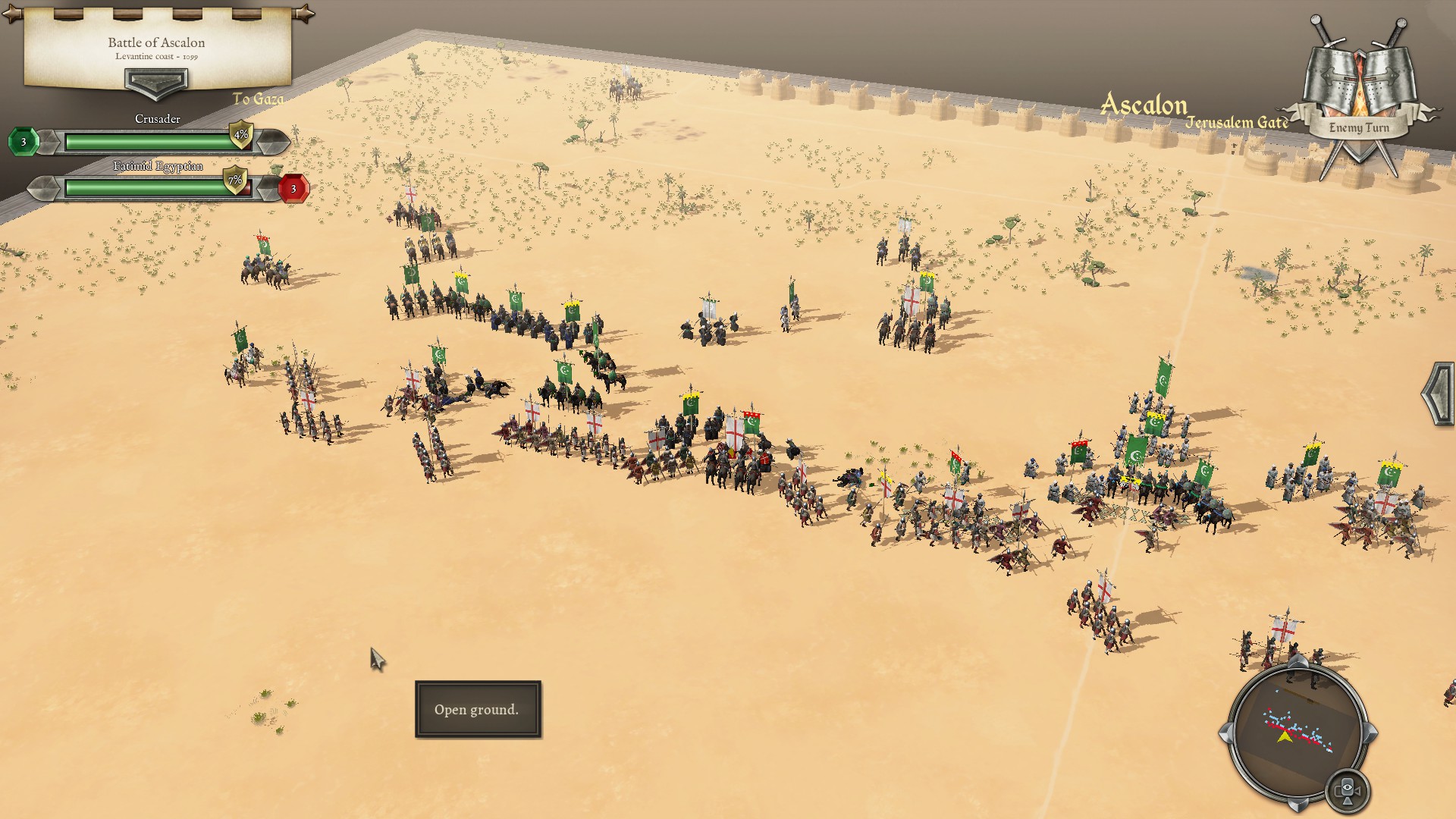
Closing Thoughts
It’s a shame that they included the Indian subcontinent in this DLC, not because the new nations introduced here have boring rosters, but because it gets so overshadowed by the events surrounding the Crusade. We don’t get many games based on Indian history, so it would have been nice to see more of it here. Even so, this is another quality DLC for Field of Glory II: Medieval that adds a lot more nations to play as and a bunch more units. Much like the base game, and the last DLC, the campaigns and scenarios give you the historical context, tell you which side own, and also what the immediate consequences of that victory was, which is interesting to read.
There really are not a whole lot of surprises in this DLC, but if you enjoyed the base game, and are interested in the events surrounding the Crusades, or just want to see what armies from the Indian sub-continent would look like, then Swords and Scimitars is well worth getting. If the base game was not your cup of tea though, then Swords and Scimitars won’t change your mind about it.










